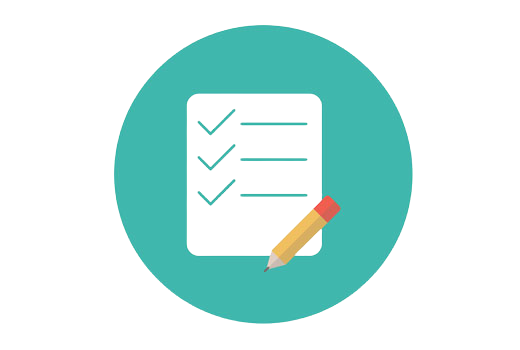Your Shopping Cart

Enrol now to become a Certified Machine Learning expert with CertZip Machine Learning Masters Program and upgrade your skills.
This Machine Learning Program makes you trained in techniques like Supervised Learning, Unsupervised Learning and Natural Language Processing. Our Machine learning course contains training on the latest advancements and technical approaches in Artificial Intelligence & Machine Learning, such as Deep Learning, Graphical Models and Reinforcement Learning.
A master's in Machine Learning (ML) coursework explores the fundamental mathematics of artificial intelligence and machine learning while enabling students to develop related tools and apply AI and ML to various real-world problems.
Our Machine Learning Course Learning track has been curated after thorough research and recommendations from industry experts. It will help you differentiate yourself with multi-platform fluency and have real-world experience with the essential tools and platforms.
There are no prerequisites for enrolment in the Machine learning Masters Program.
Experienced professional working in the IT industry. An aspirant is planning to enter the data-driven world of Machine Learning.
A machine learning engineer is an engineer that utilizes programming languages such as Python, Java, Scala, etc., to run experiments with the correct machine learning libraries.
As a machine learning engineer working in this branch of artificial intelligence, you'll be accountable for developing programmes and algorithms that allow machines to take steps without being directed.
Machine-learning jobs have jumped by almost 75 per cent over the past four years and are poised to keep growing. Pursuing a machine learning position is a solid choice for a high-paying profession that will be in demand for decades.
understand the fundamental concepts of Python.
learn various types of sequence structures, their use, and perform sequence operations.
learn about different types of Functions and various Object-Oriented concepts such as Abstraction, Inheritance, Polymorphism, Overloading, Constructor, and so on.
Discover how to make generic python scripts, address errors/exceptions in code, and extract/filter content using regex.
basics of Data Analysis utilizing two essential libraries: NumPy and Pandas, the concept of file handling using the NumPy library.
gain in-depth knowledge about exploring datasets and data manipulation utilizing Pandas.
you will learn Data Visualization using Matplotlib.
you will learn GUI programming using the ipywidgets package.
you will get to learn to design Python Applications.
you will learn to design Python Applications.
Understand Machine learning with Python training and see how Data Science helps analyze large and unstructured data with various tools.
structured form, analyzing the data, and representing the data in a graphical format.
you will learn the concept of Machine Learning with Python and its types.
know Supervised Learning Techniques and their implementation, for example, Decision Trees, Random Forest Classifier etc.
learn about the impact of dimensions within data. You will be taught to perform factor analysis using PCA and compress sizes. Also, you will be developing an LDA model.
learn Supervised Learning Techniques and their implementation, for example, Decision Trees, Random Forest Classifier etc.
learns about Unsupervised Learning and the various types of clustering used to analyze and analyze the data.
understand Association rules and their extension towards recommendation engines with the Apriori algorithm.
learn about developing an intelligent learning algorithm such that the Learning becomes more and more accurate as time passes.
know about Time Series Analysis to predict dependent variables based on time. You will be taught different models for time series modelling such that you analyze accurate time-dependent data for forecasting.
learn about selecting one model over another. You will understand how to transform weaker algorithms into stronger ones.
know how to approach and execute a Project end to end, we will be having a Q&A and doubt clearing session.
learn about text mining and how to extract and read data from common file types, including NLTK corpora.
comprehend some ways of text extraction and Cleaning utilizing NLTK.
learn how to analyze and analyze a sentence structure using a group of words to create phrases and sentences using NLP and English grammar rules.
explore text classification, vectorization techniques and processing utilizing scikit-learn
comprehend to create a Machine Learning classifier for text classification
learn Sentiment Classification on Movie Rating Dataset
understand the concepts of Deep Learning and learn how it differs from machine learning. This Deep Learning Certification module will also brief you on implementing the single-layer perceptron concept.
Learn TensorFlow 2. x. You will install and validate TensorFlow 2. x by building a Simple Neural Network to predict handwritten digits and using Multi-Layer Perceptron to improvise the model's accuracy.
comprehend how and why CNN came into existence after MLP and learn about Convolutional Neural Network (CNN) by studying the theory behind how CNN is used to predict 'X' or 'O'. You will also use CNN VGG-16 utilizing TensorFlow 2 and indicate whether the given image is of a 'cat' or a 'dog' and save and load a model's weight.
understand the concept and working of RCNN and figure out why it was developed in the first place.
Understand what a Boltzmann Machine is and its implementation, learn what an Autoencoder is, its various types, and how it works.
understand the negative generative model and how it works by implementing a step-by-step Generative Adversarial Network.
classify each emotion shown in the facial expression into various categories by creating a CNN model to identify the images' facial expressions and anticipate the uploaded image's facial expression. Use OpenCV and Haar Cascade File during the project implementation to check the emotion.
differentiate between Feed Forward Network and Recurrent neural network (RNN) and understand how RNN works, understand and learn about GRU and implement Sentiment Analysis utilizing RNN and GRU.
understand the architecture of LSTM and the significance of gates in LSTM. Differentiate between sequence-based models and improve the model's efficiency utilizing BPTT.
execute Auto Image captioning utilizing pre-trained model Inception V3 and LSTM for text processing.
understand Big Data, the limitations of the existing solutions for Big Data problems, how Hadoop solves the Big Data problem, Hadoop ecosystem components, Hadoop Architecture, HDFS, Rack Awareness, and Replication. You will learn about the Hadoop Cluster Architecture and important configuration files in a Hadoop Cluster. You will also get an introduction to Spark, why it is used and an understanding of the difference between batch processing and real-time processing.
learn Python programming basics and understand different types of sequence structures, related operations, and their usage. You will also learn diverse ways of opening, reading, and writing files.
know how to make generic python scripts, address errors/exceptions in code and finally, how to extract/filter content utilizing regex.
understand Apache Spark in-depth, and you will be learning about various Spark components; you will be creating and running multiple spark applications. In the end, you will learn how to perform data ingestion using Sqoop.
know about Spark - RDDs and other RDD related manipulations for implementing business logic (Transformations, Actions, and Functions performed on RDD).
understand SparkSQL, which is utilized to process structured data with SQL questions. You will learn about data-frames and datasets in Spark SQL, and different SQL operations performed on the data-frames. You will also learn about the Spark and Hive integration.
understand why machine learning is required, various Machine Learning techniques/algorithms and their execution utilizing Spark MLlib.
you will be implementing various algorithms supported by MLlib, such as Linear Regression, Decision Tree, Random Forest, etc.
understand Kafka and Kafka Architecture. Afterwards, you will go through the details of the Kafka Cluster, and you will also learn how to configure different types of Kafka Cluster. You will also introduce Apache Flume, its basic architecture, and its integration with Apache Kafka for event processing.
work on Spark streaming to build scalable fault-tolerant streaming applications. Learn about DStreams and different Transformations performed on the streaming data.
know about the various streaming data sources such as Kafka and flume. You will be able to create a spark streaming application.
Statement: A financial bank is trying to enlarge the financial inclusion of the unbanked population by providing a positive and safe borrowing experience. To ensure this underserved population has a favourable loan experience, it uses various alternative data--including telco and transactional information--to predict its clients' repayment abilities. The bank asked you to create a solution to guarantee that clients capable of repayment are accepted and that loans are given with a principal, maturity, and repayment calendar to empower their clients to succeed.
Statement: AnalyzeAnalyze and deduce the best performing movies based on customer feedback and review. Use two separate APIs (Spark RDD and Spark DataFrame) on datasets to find the best ranking movies.
learn the critical concepts of Spark GraphX programming and operations and different GraphX algorithms and their implementations.
The average salary for a Machine Learning Engineer is $145,297
Quickly identifies trends and patterns. No human intervention is needed (automation) Continuous Improvement. Handling multi-dimensional and multi-variety data. Wide Applications.
Yes, if you're looking to follow a career in machine learning, a little coding is necessary.
To better understand the Machine Learning Masters Program Certification Training, one must learn as per the curriculum.
Learning how to use machine learning isn't harder than learning any other set of libraries for a programmer. If you require to sort data, you don't create a sort algorithm; you pick an appropriate algorithm and utilize it correctly.
Machine learning is essential because it gives enterprises a view of trends in customer behaviour and operational business patterns and supports the development of new products. Many of today's leading companies, such as Facebook, Google and Uber, make machine learning a significant part of their operations.
Algorithms (searching, sorting, optimization, dynamic programming) Computability and complexity (P vs NP, NP-complete problems, big-O notation, approximate algorithms, etc.) Computer architecture (memory, cache, bandwidth, deadlocks, distributed processing, etc.)
By enrolling in the Machine Learning Masters Program Training and completing the module, you can get the CertZip Machine Learning Masters Program Certification.


Every certification training session is followed by a quiz to assess your course learning.

The Mock Tests Are Arranged To Help You Prepare For The Certification Examination.

A lifetime access to LMS is provided where presentations, quizzes, installation guides & class recordings are available.

A 24x7 online support team is available to resolve all your technical queries, through a ticket-based tracking system.

For our learners, we have a community forum that further facilitates learning through peer interaction and knowledge sharing.

Successfully complete your final course project and CertZip will provide you with a completion certification.
A Machine Learning Masters Program Training is a certification that demonstrates that the holder has the proficiency and aptitudes needed to work with Machine Learning.
The recommended duration to complete this program is 28 weeks. However, it is up to the individuals to complete this program at their own pace.
Yes, we will provide you with a certificate of completion for every course part of the learning pathway once you have successfully submitted the final assessment and our subject matter experts have verified it.
